
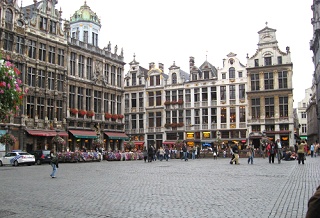
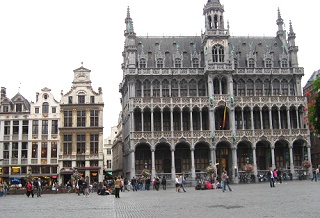
| ANNE WANNER'S Textiles in History / cieta conference in Brussels, Belgium - 2009 |
 |
 |
 |
|
| From 28 september to
1 October 2009 MUSEES ROYAUX D'ART ET D'HISTOIRE, BRUXELLES, BELGIQUE Parc du Cinquantenaire, 10, 1000 Bruxelles, Belgique |
| Visits in Brussels: |
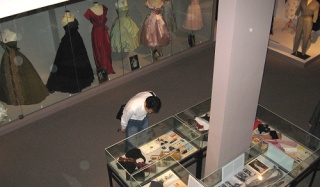 Musée du costume et de la dentelle |
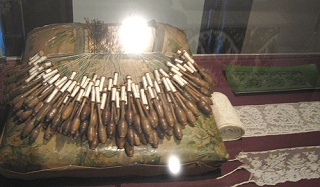 |
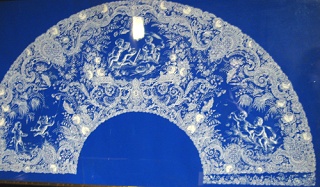 |
| The City of Brussels is inviting the CIETA members to a reception at the City Hall, Grand-Place: |
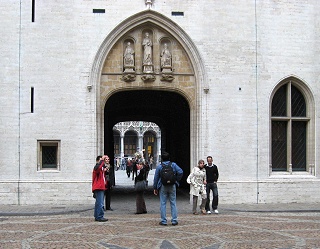 |
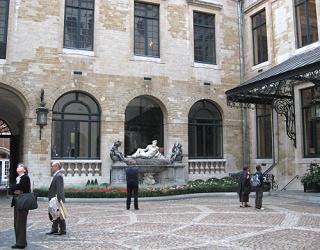 |
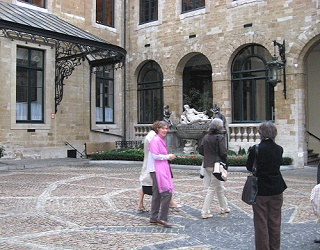 |
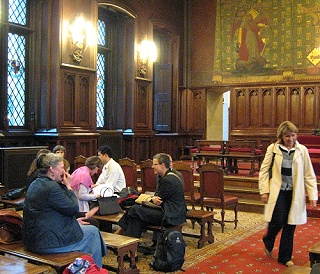 |
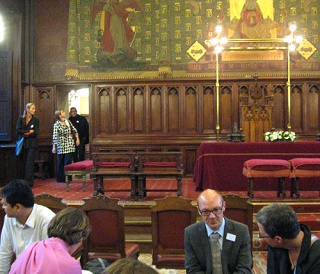 |
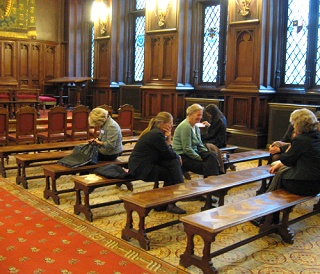 |
| Trésor de la Cathédrale saints Michel et Gudule |
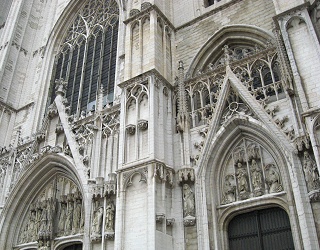 |
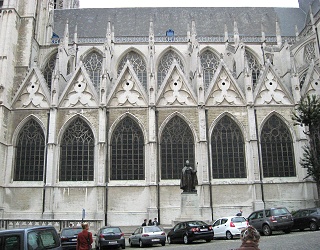 |
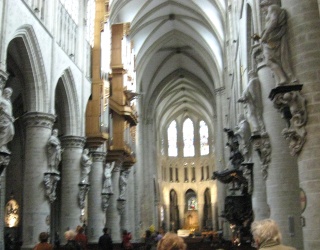 |
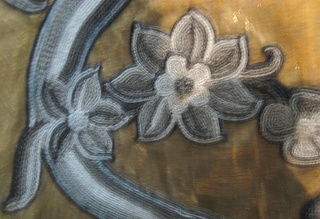 |
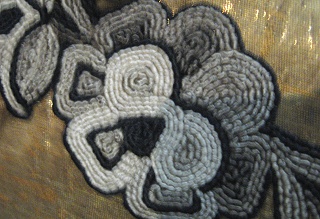 |
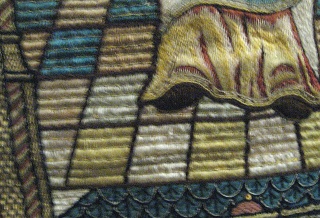 |
 |
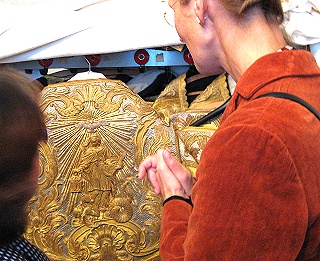 |
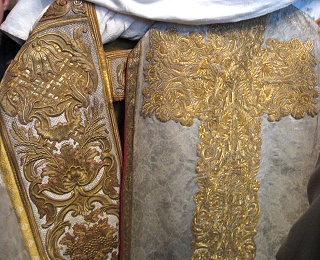 |
| Coktail at the Musées Royaux d'Art et d'Histoire |
| Official Dinner of the 23re CIETA Congress meeting, salle "le grand narthex", Musées Royaux d'Art et d'Histoire de Bruxelles |
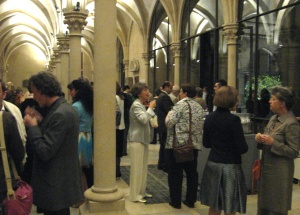 |
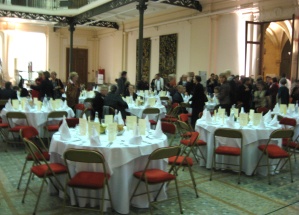 |
 |
| Informative lecture out of main theme: |
| Birgitt
Borkopp-Restle, Regula Schorta, Switzerland, The
Abegg Foundation Chair for the History of Textile Arts at
the University of Bern. Summary The promotion of research on the history of the textile arts has always been one of the goals of the Abegg-Stiftung. With the endowment of a full professorship at the Department of Art History at the University of Bern, limited to a duration of ten years to begin with, the Abegg-Stiftung aims to reinstate textile historical research in the academic world, without distancing it from the museum context. A two-year MA degree course is planned, followed by a PhD program, both to be studied primarily in conjunction with art history. |
| P A P E R S on E M B R O I D E R Y |
| MONDAY SEPTEMBER 28th |
| Zvezdana Dode, Russia |
| Looted Christian
Embroidery in the costume of a nomad (13th - 14th
centuries AD). Summary During the Mongol Period, silk textiles were not only traded, but were also thought of highly by the nomads as a trophy. In one of the burials excavated in Kalmykia (which in the 13th - 14th centuries AD was part of the realm of the Golden Horde), an interesting artifact has been found in the grave of a man. Several fragments of embroidered silk textile had been preserved on the legs. The shape of the trousers has parallels in pictorial sources and various archaeological finds from the former Mongol Empire. The embroidered silk had originally been a curtain for a Christian icon showing "The Ascension of Christ". The embroidery had been made in Byzantium or Ancient Rus. It may be assumed that the curtain was looted by a nomad from one of the Christian churches in Dagestan, on the western shore of the Caspian Sea. That region had an especially strong cult of the apostle, Bartholomew, whose name, embroidered in Cyrillic, was found preserved on the silk found in Kalmykia. |
| Evelin Wetter, Switzerland |
| Evidence of a Trade
in Luxury Textiles: Some Thoughts concerning Venetian
Embroideries and a special group of velvets in historical
Hungary. Summary In comparison with Northern European treasuries of medieval luxury textiles (Gdansk, Stralsund, Brandenburg, Halberstadt, etc...) their transmission in historical Hungary presents some distinct features: in the treasuries of Lutheran churches in Romania today, as well as in Hungarian Catholic cathedrals, a strong Venetian connection is apparent. On the one hand, this seems to have been caused by trade contacts; on the other hand, representations of specific patterns in contemporary altar pieces reflect a certain taste and demand. While the Venetian-produced embroidery is easily distinguished, the group of velvets mentioned requires discussion within a broader context. |
| Masako Yoshida. Japan |
| European design
textiles produced in China and exported to Japan in the
late 16th through the early 17th centuries. The actual presentation differed slightly from the following abstract. Summary Several examples of European design textiles produced in China and exported to Japan in fne late 16th through the early 17th centuries will be discussed. These objects, preserved in Japanese collections, were originally produced for Europeans by the Chinese and were then traded to Japan by European missionaries and merchants as political gifts. The Japanese altered some of them to create traditional costumes. One example is a bedcover with a motif of an auspicious bird that was transformed from "pelican in her piety" by Chinese craftsmen. Eventually it was traded to Japan where it was altered once again to make a jacket for the traditional Kyogen performance. |
| TUESDAY SEPTEMBER 29th |
| Maria Joao Pacheco Ferreira, Portugal |
| Chinese Trade
Textiles for the Portuguese Market: Their presence in
religious contexts in the 16th and 17th centuries. Summary With the establishment of Portuguese settlements in China, textiles became an important trade commodity between Macau, India and Portugal. According to contemporary documents, large quantities of raw materials, such as silk yams, as well as woven cloths, finished garments and furnishings were part of this commerce, especially those intended for religious contexts. Indeed, we observe that typical Chinese textiles, such as mandarin squares, and other objects were being produced according to Portuguese instructions and used as liturgical or secular adornments in Catholic ceremonies. This talk aims to present and discuss some examples of these celebratory events. |
| Maria-Anne Privat-Savigny, France |
| The Religious
Worship Administration Office and the Financing of
Pontifical under the Regime of the Concordat of 1801. Summary In 1992, to coincide with the exhibition Paramentica, Elisabeth Hardouin-Fugier published a preliminary study of orders for pontifical financed by the Religious Worship Administration Office {Administration des Cubes) under the Concordat regime of 1801. This lecture aims to develop this initial analysis by tackling the following questions: 1) The Religious Worship Administration Office pursued a specific policy in terms of the financing of pontifical. What amounts were involved and how were they spread temporally and geographically? Can textile pontifical be considered a political tool at the service of a more global religious policy? 2) Detailed examination and analysis of the estimates submitted for approval to the Religious Worship Administration Office have made it possible to reveal a specific type of pontifical endorsed by the Concordat government. What was it like in terms of quality and style? Did the Office follow a committed policy in favour of the adoption of the Neo-Gothic style? 3) Finally, through this financing, the Religious Worship Administration Office contributed to the economic development of an important French industrial sector in the 19th century. What guidelines were adopted? During the period of the Concordat of 1801, the Religious Worship Administration Office pursued averitable policy of ordering pontifical, the latter becoming a political and aesthetic tool and a means of collaboration with the prelates. |
| Ursula Karbacher, Switzerland |
| The first balance
sheets from 1760 to 1807 of a St. Gallen company
celebrating its 250th anniversary Summary The St. Gallen textile trade has a long tradition. The manufacture and trading of linen has brought the city prosperity since the 15th century. This year, a manufacturer of St. Gallen embroidery and a market leader is celebrating its 250th anniversary. Since its establishment in 1759, the company has dealt in the world-famous St. Gallen cloths, multicoloured cotton fabrics and, later, embroideries. The first balance sheets from 1760 to 1807 will be placed in the context of the textile history of St.Gallen and will be compared to corresponding objects from the same period. |
| WEDNESDAY SEPTEMBER 30th |
| Rosa Martin i Ros,
Montserrat Bargallo i Sanchez. Antoni Bargallo i Pi, Spain |
| Antependium of Saint
Louis of Toulouse (Saint Louis d'Anjou) Summary Formerly in the possession of the Cathedral ofTarragona, it is has been held at the Museu Diocesa of the archdiocese of Tarragona since 1918. It is dedicated to Saint Louis of Toulouse (1274-1298), a Franciscan friar and Bishop of Toulouse. He was the eldest surviving son of the King of Naples, Charles II of Anjou. The antependium is divided into four embroidered panels which depict episodes in the life of the saint: - The Renunciation of the crown of Naples, - The Ceremony of Louis taking holy orders, - King Charles visiting his son at the monastery and - The Preaching of Louis. The four panels are separated by panels embroidered with plant motifs. The altar frontal is embroidered with polychrome silks and gold and silver threads on a plain weave ground. The name of the workshop where it was embroidered is not known. It dates from the middle of the 15th century, perhaps from between 1440 and 1450. It is thought that the author of the cartoon for the embroidery was a painter from the circle of Catalan Gothic painters, Jaume Huguet (c. 1415-1492). The altar frontal was conserved during the winter and spring of 2009. During this conservation treatment, the Museu Diocesa of Tarragona proposed that the authors should study the altar frontal. This involved the technical examination of the fabric, threads and embroidery as well as historical, stylistic and iconographic analysis. This study is the subject of this paper. |
| Anne Wanner-JeanRichard, Switzerland |
| Medieval Embroidery
Stitches and the Vocabulary Project. Summary In my 2007 paper, a possible structure for embroidery stitches was presented. In this paper, I would like to show a way of analysing medieval embroidery stitches with the help of the vocabulary. Medieval gold embroidery: couching, underside couching and shaded gold embroidery, as used in opus Anglicanism of the 12th and 13th centuries. Self couching in wool embroidery, as applied in tapestries and altar cloths of the 14th century from Northern Germany. Broad chain stitch, Maltese Cross stitches as found in linen altar cloths of the 12th and 13th centuries. |
| home | Last revised October 16, 2009 |